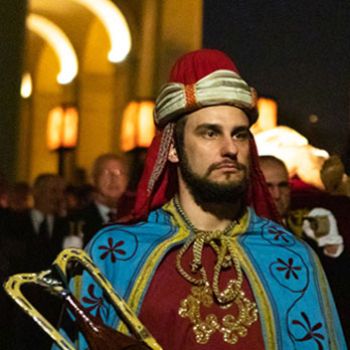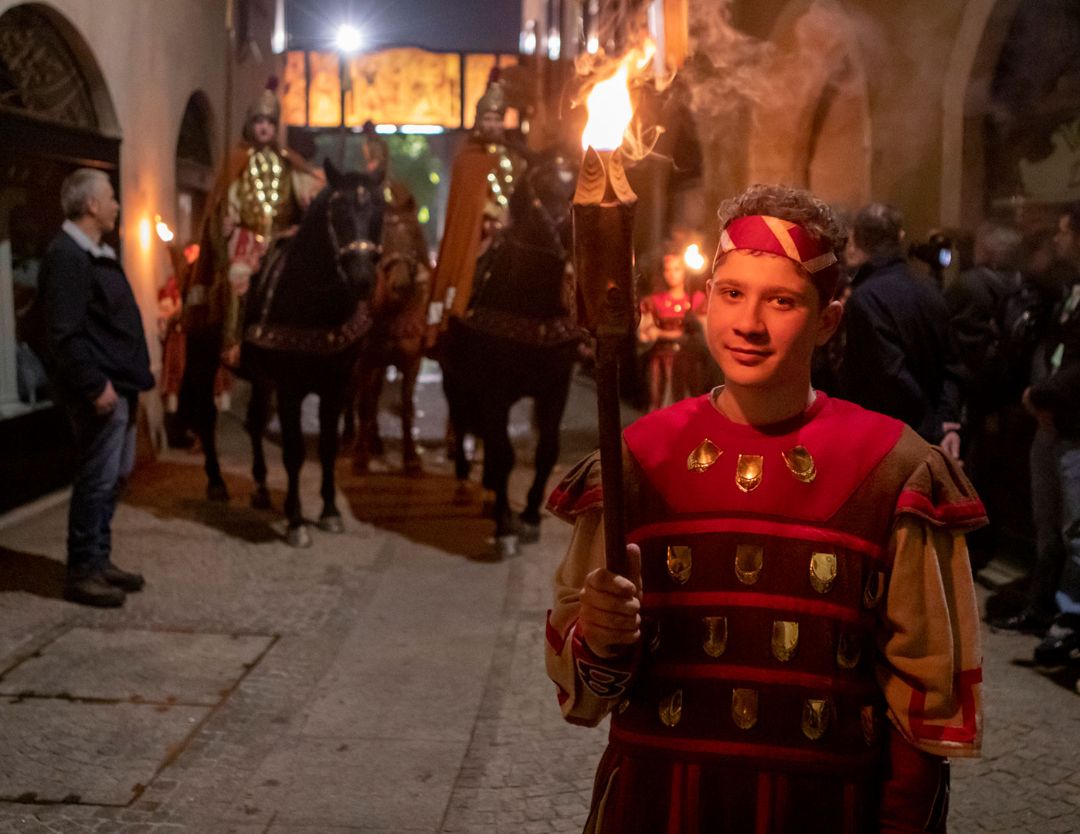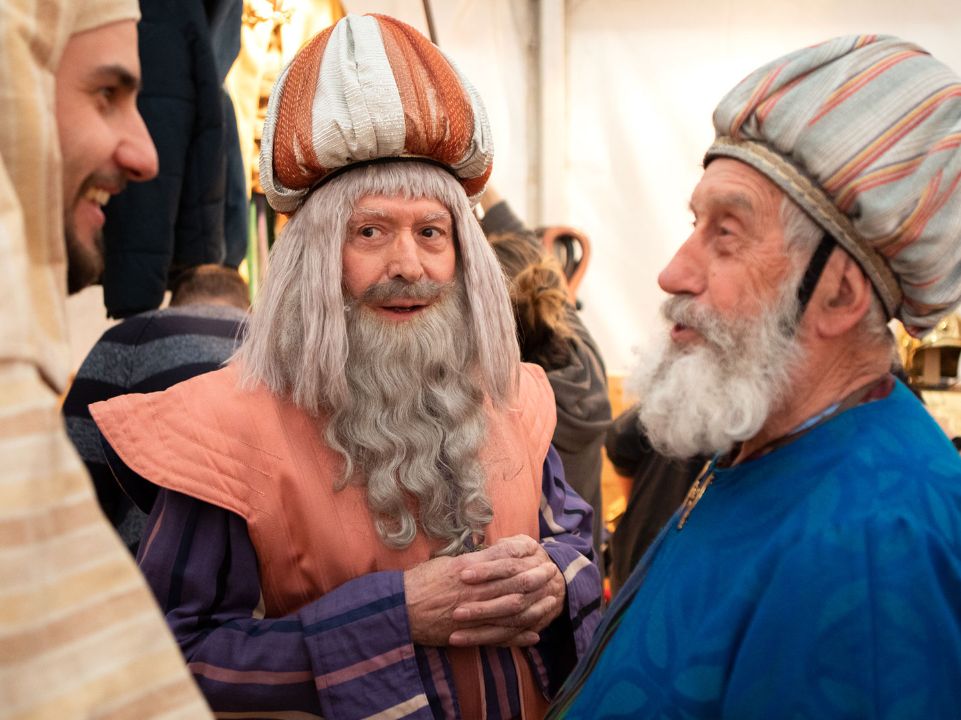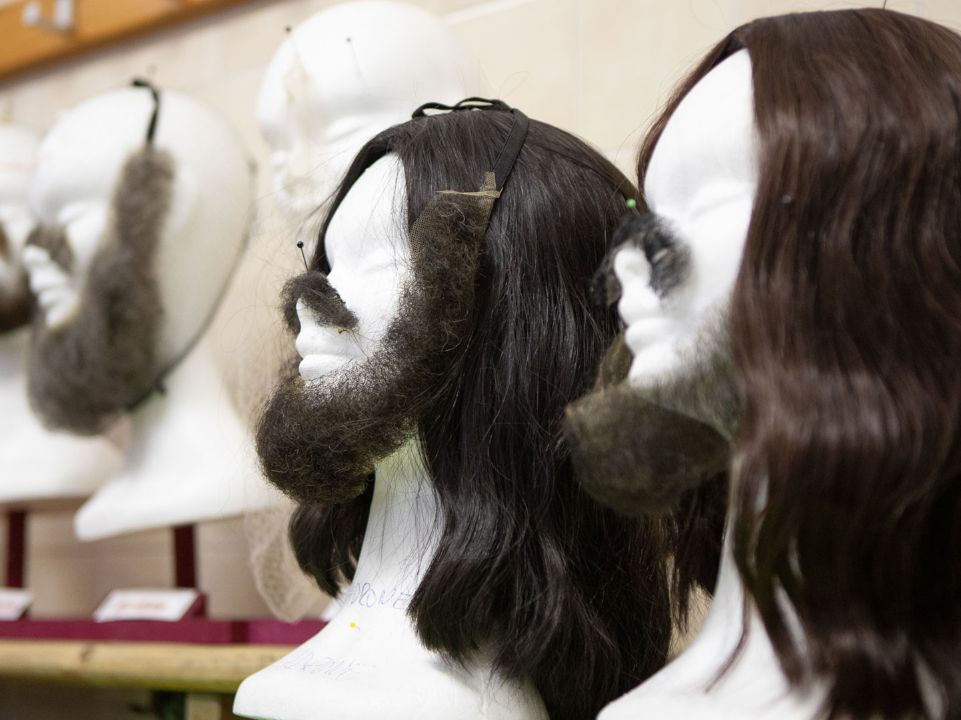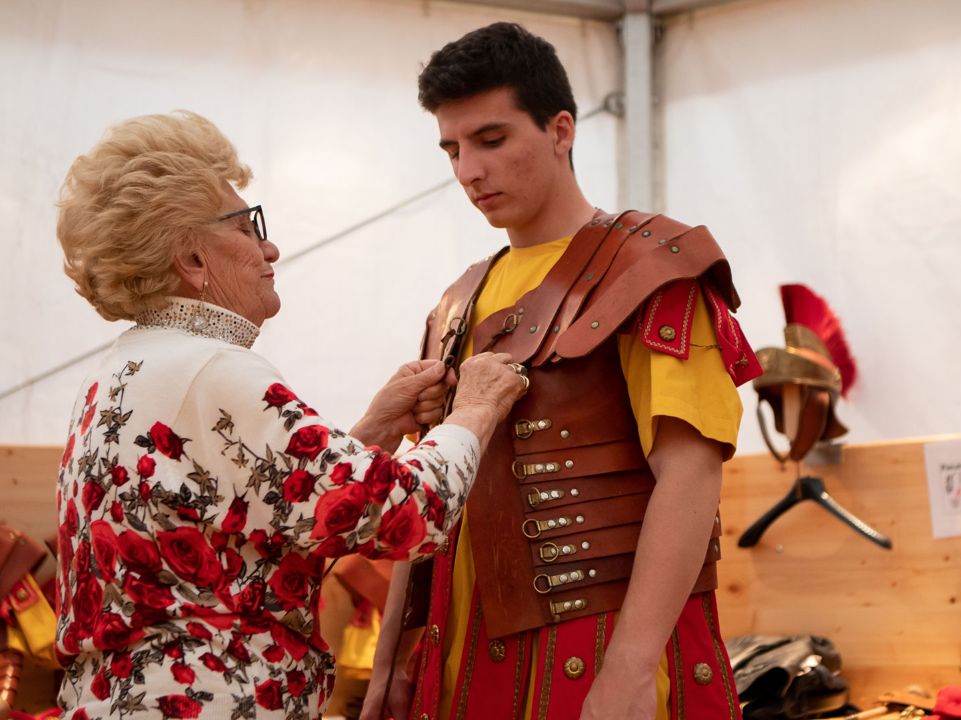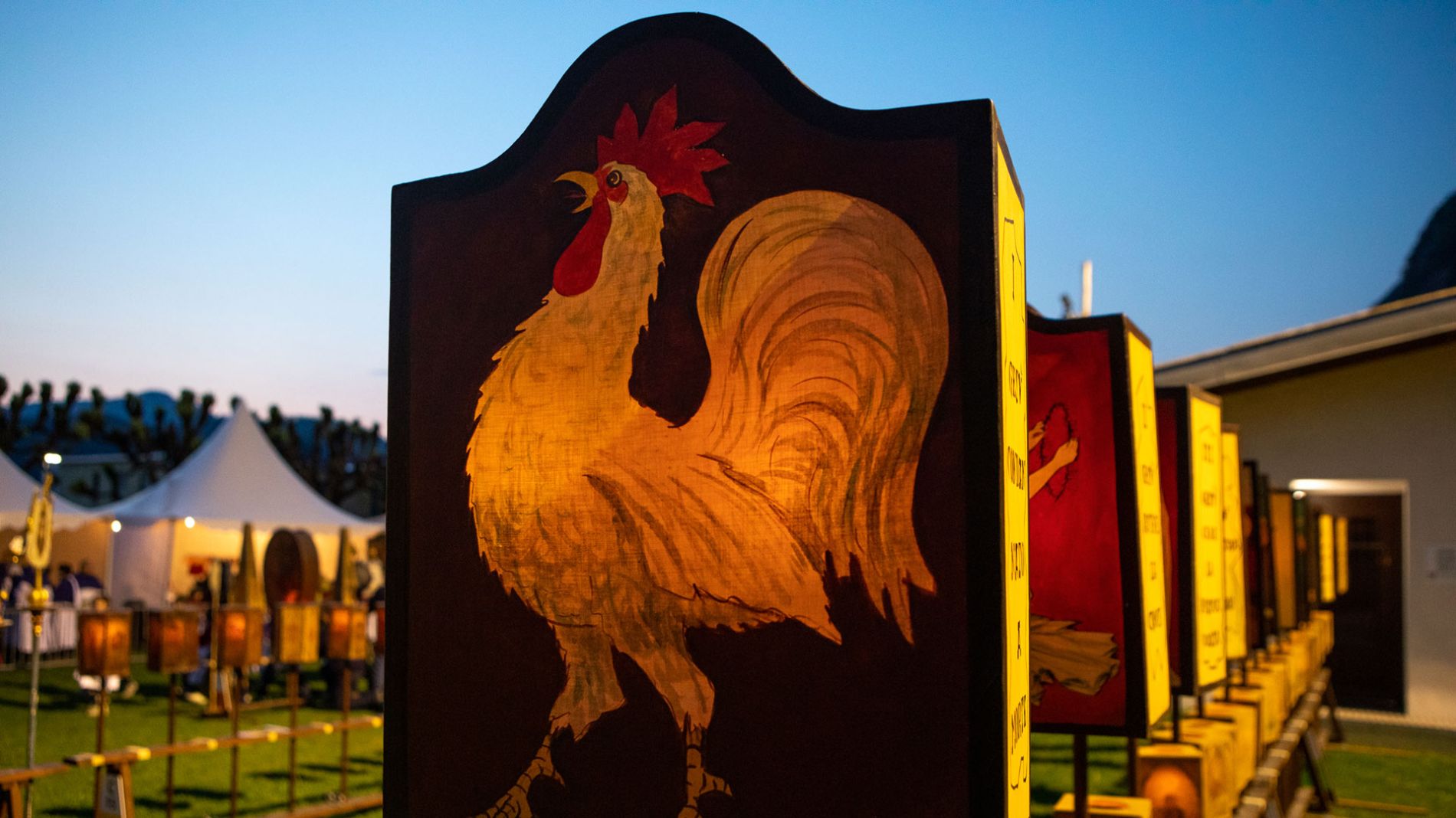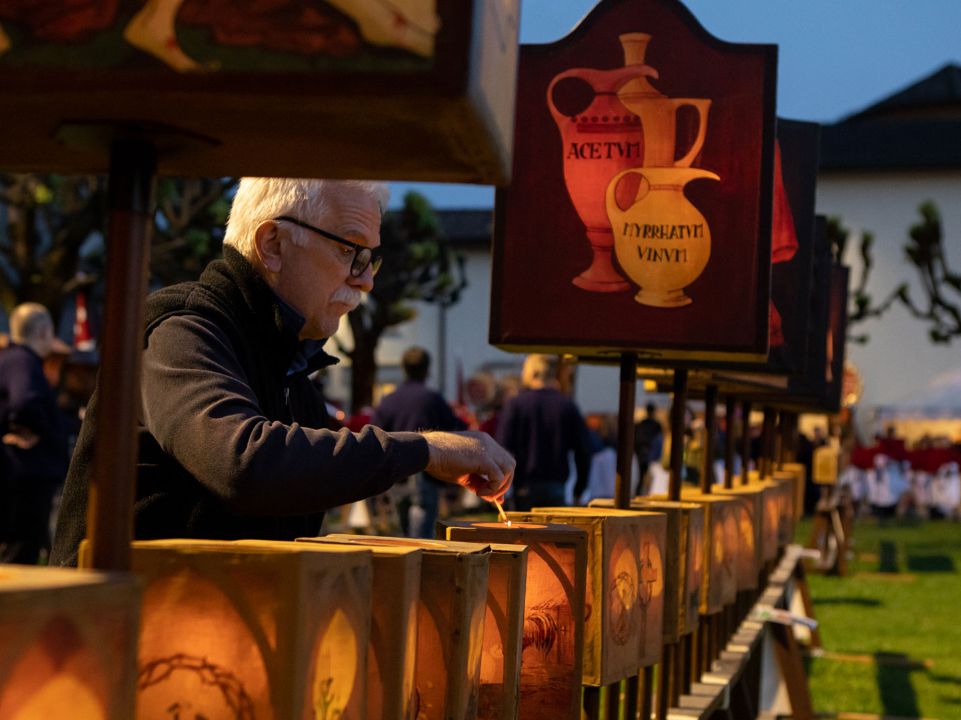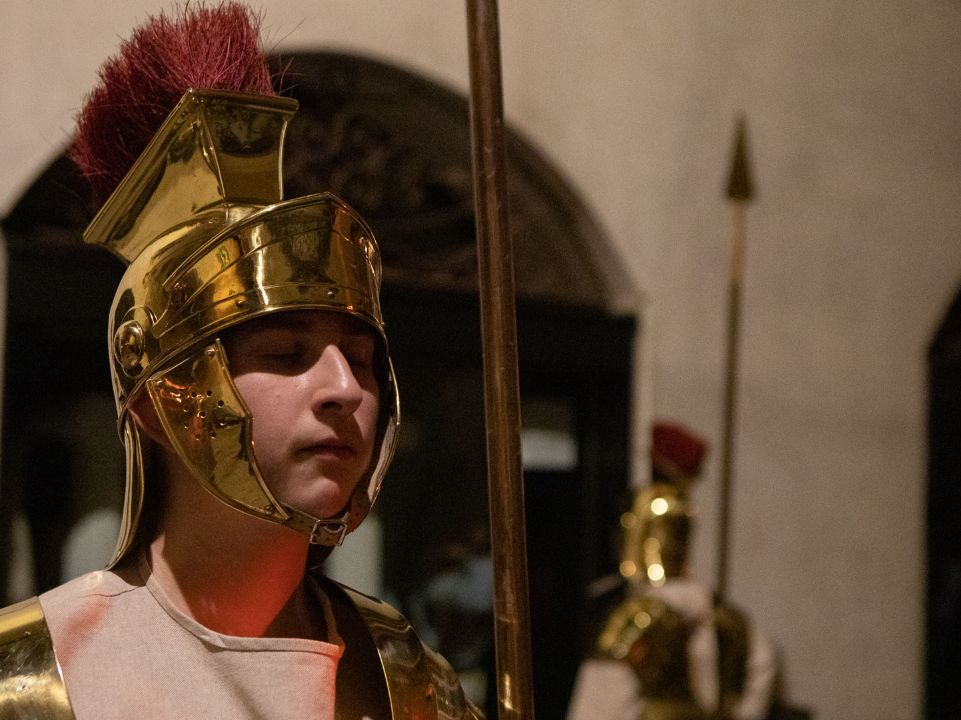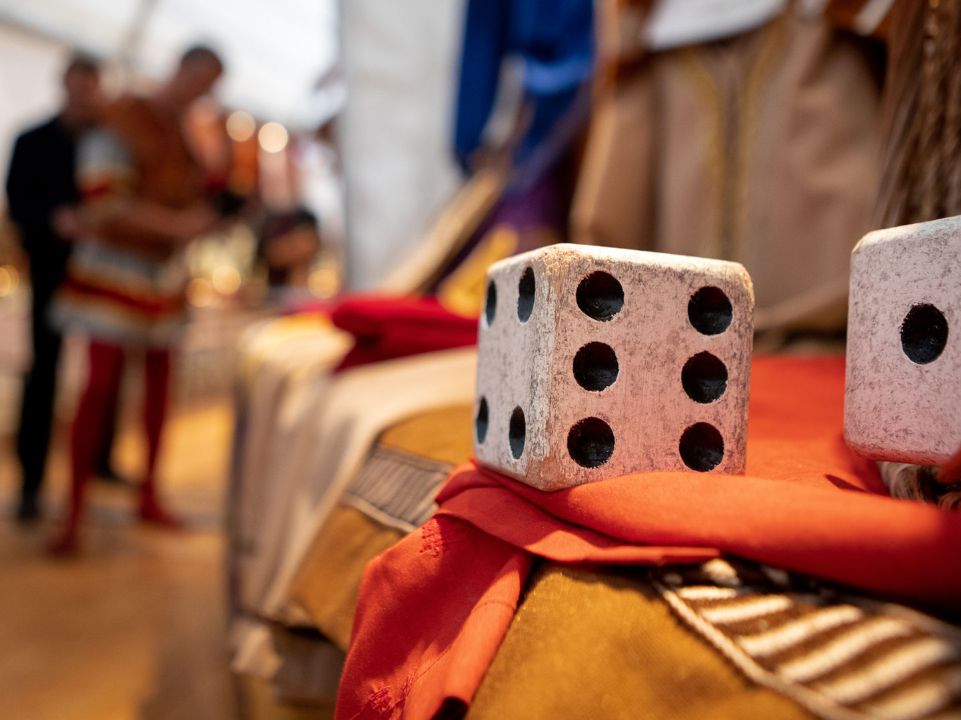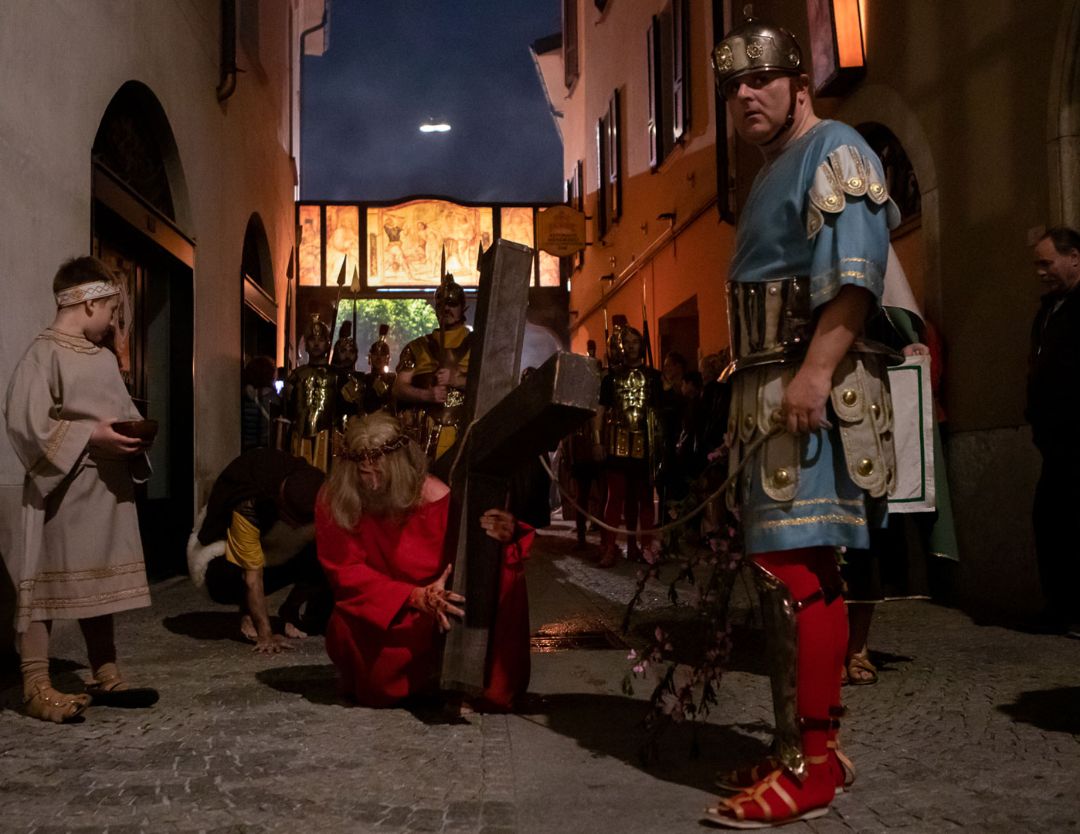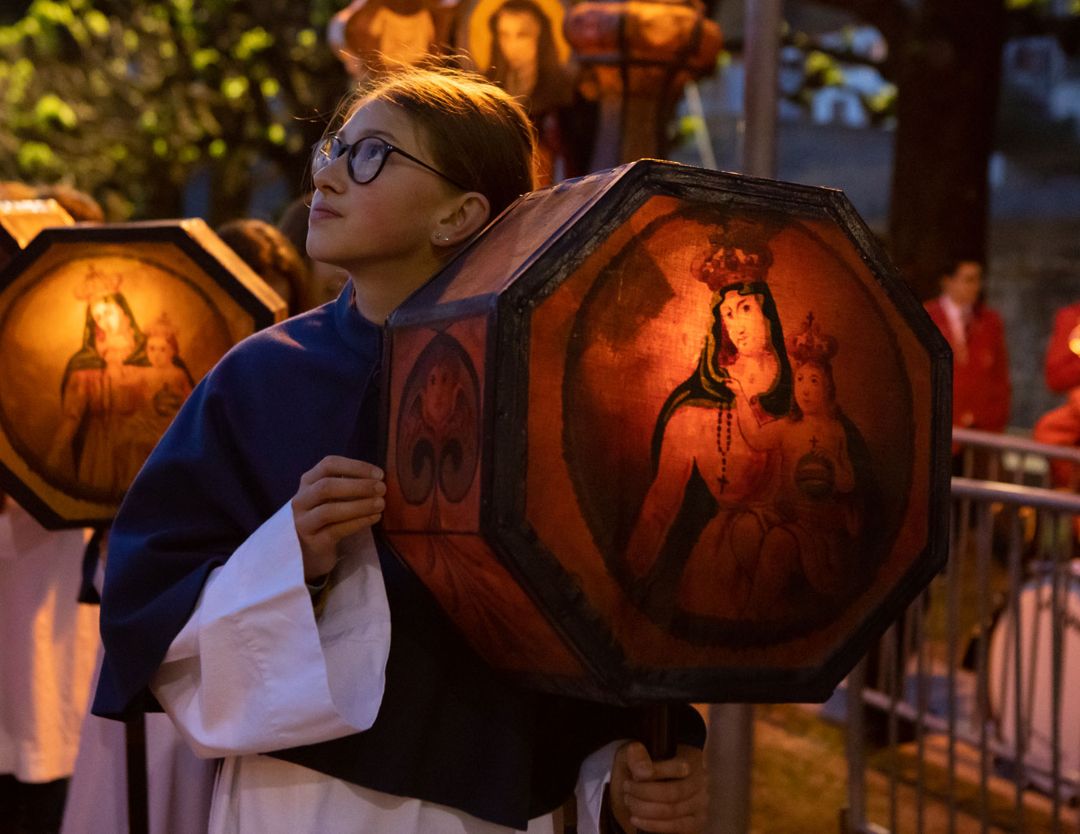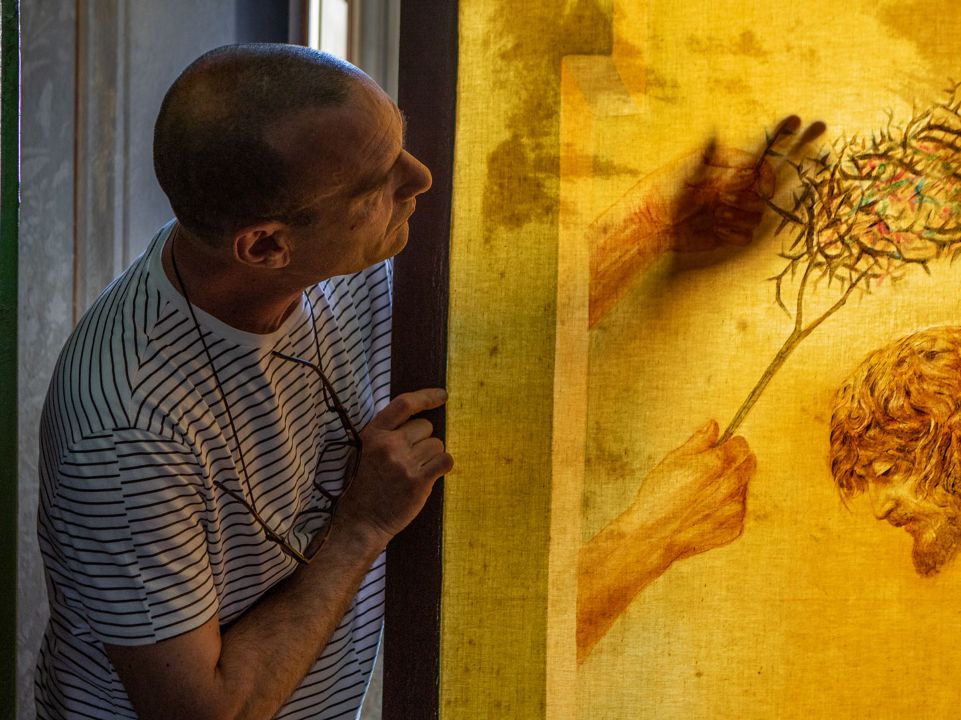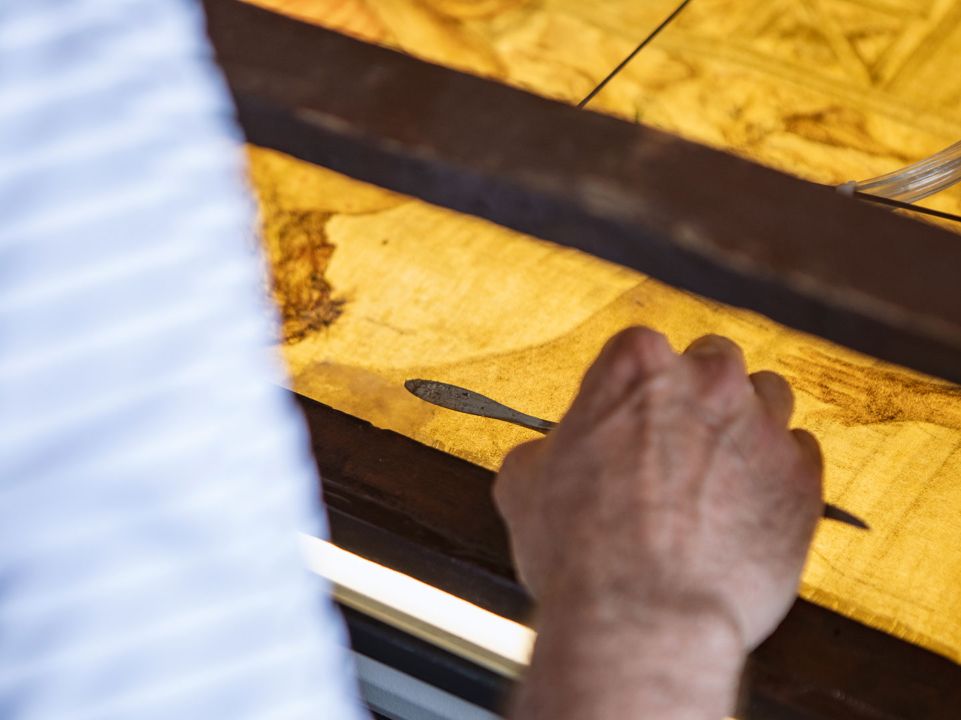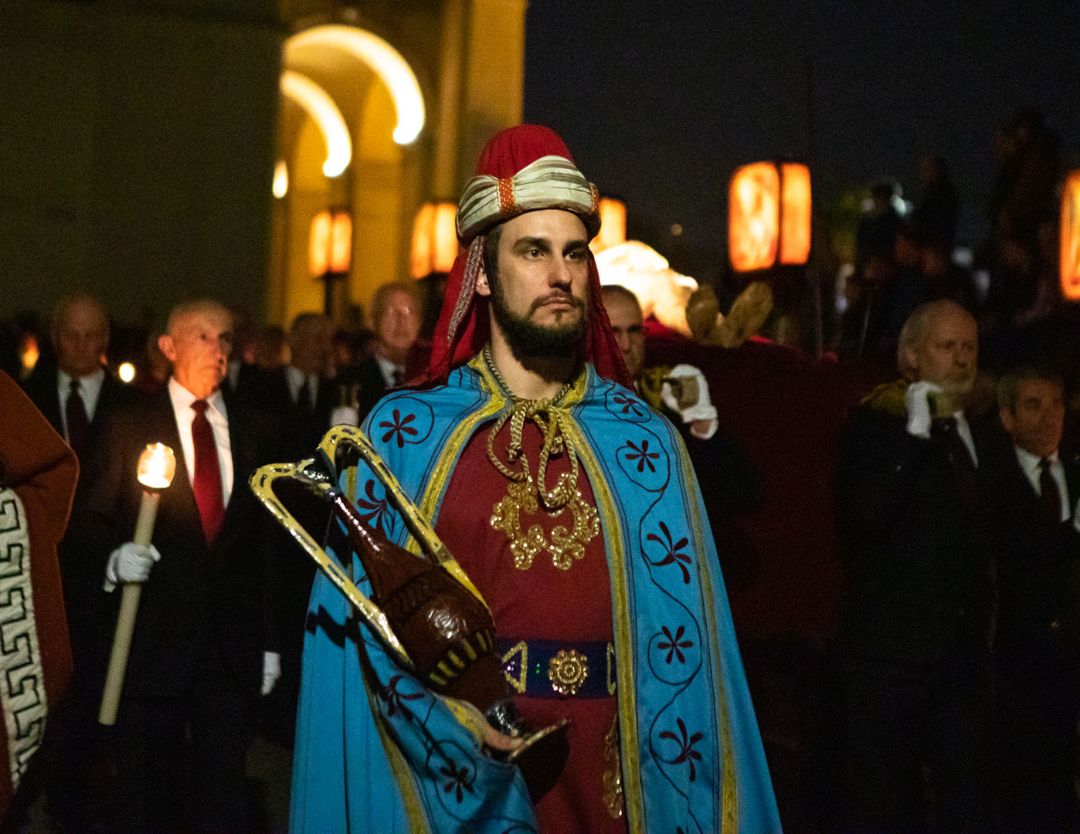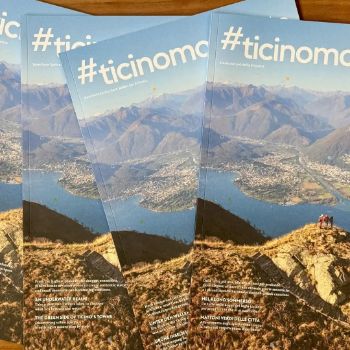At least 270 participants on the Thursday, 700 on the Friday and dozens of assistants, all volunteers. As well as all those who are left out and have to wait to dress up as a legionnaire or one of the three Marys another year. The Holy Week Processions in Mendrisio, is part of the UNESCO World Heritage and bring history to the stage.
THE CHARACTER
Claudio Fontana, participant in the Processions of Holy Week
You get goose bumps when the procession reaches the main square and 800 people turn to watch it.

